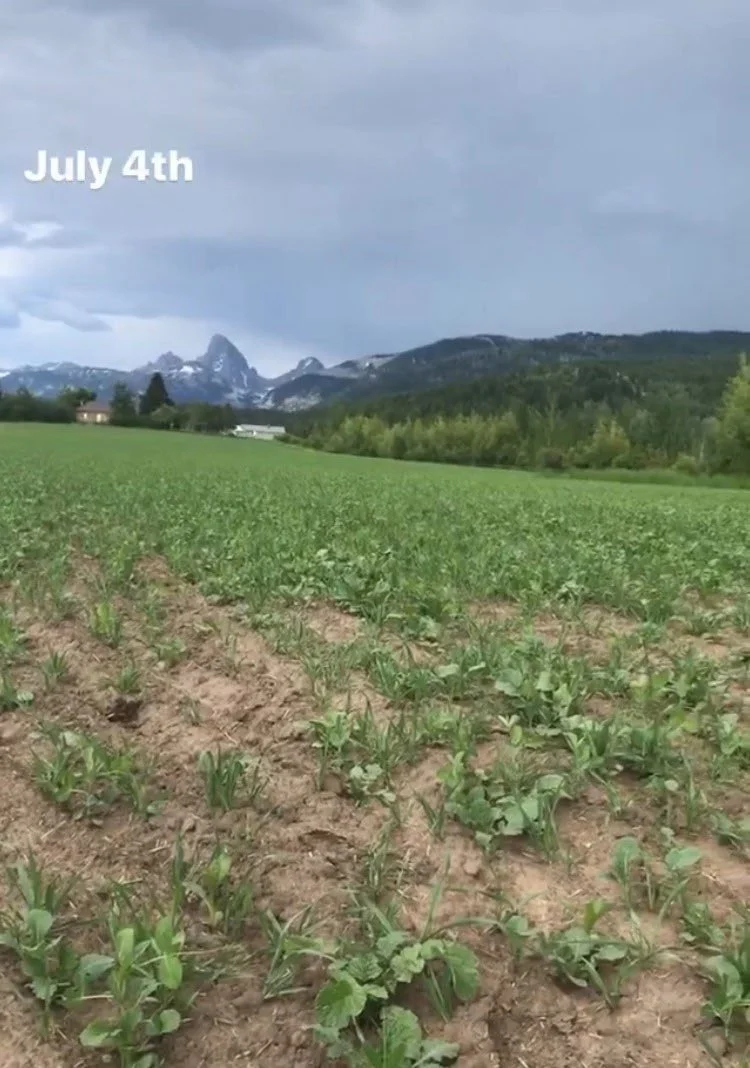What happens to soil health if cropland is left to rest for a year?
Tavner Wilson, who owns and operates Bar W Agriculture with his family in Alta, Wyoming, wanted to find out. With a grant from Teton Conservation District, Tavner set aside eight acres in the summer of 2020 to experiment with a cover crop seed mix and till and no-till practices. A cover crop is grown with the goal of enriching soil, compared to a cash crop which is grown for commercial value. Tavner’s cover crop was a diverse mix of berseem clover, spring forage peas, chickling vetch, spring oats, teff grass, spring triticale, purple top turnips, smart radish, bayou kale, plantain, and safflower.
Tavner had some interesting observations throughout the year, including sheaths of soil remaining attached to the plant roots growing in the experimental plots (see photo on left below). “This is a positive sign,” explains Tavner, “it’s an indication of biological and microbial activity in the soil, and also indicates the plant has more of a relationship with the soil than it might otherwise have.”
July 4, 2020. Photo courtesy of Tavner Wilson.
July 4, 2020. Photo courtesy of Tavner Wilson.
With assistance from Friends of the Teton River, Tavner did soil tests before and after the experiment to assess the change in organic matter, soil respiration, and other soil nutrients. While soil health regeneration takes years to develop, Tavner saw significant changes between the 2020 and 2021 soil test results:
Soil respiration due to microbial activity increased by 88%
Microbially-active carbon increased by 55%
Organic Nitrogen increased by 108%
Organic Carbon decreased by 16%
Organic C:N ratio decreased by 61%
Nitrogen available the next year’s crop increased by 91%
Organic matter increased by 5%
Overall soil health calculation increased by 47%
Tavner hopes this demonstration project will help him and others reduce costs and the need for synthetic fertilizers and improve retained carbon, organic matter, and water holding capacity in the soil in the future. To dig into Tavner’s project more, check out his highlighted stories on Instagram @tavnerwil.
Do you have an interesting conservation project? We’re accepting grant applications until 5pm on February 1. Click here to learn more.
July 12, 2020. Photo courtesy of Tavner Wilson.
July 12, 2020. Photo courtesy of Tavner Wilson.
July 30, 2020. Photo courtesy of Tavner Wilson.
July 30, 2020. Photo courtesy of Tavner Wilson.
August 8, 2020. Photo courtesy of Tavner Wilson.
August 27, 2020. Photo courtesy of Tavner Wilson.



